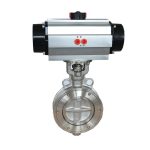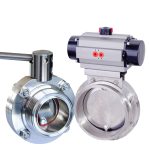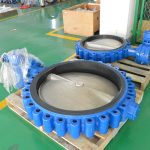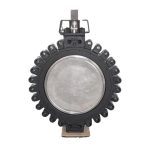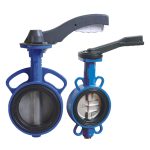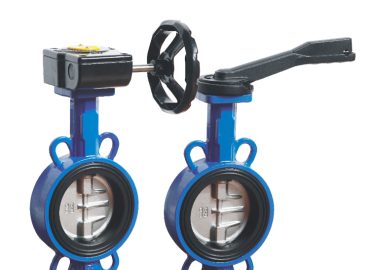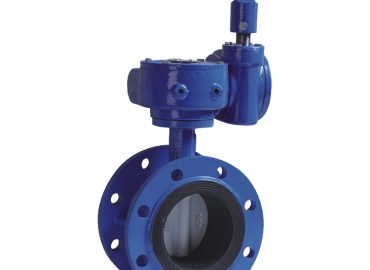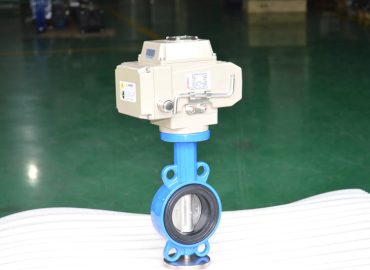Butterfly valve provide a crucial role in controlling the flow and regulating the pressure of fluids in industrial processes. With the continuous demand for increased efficiency and reduced operating costs, there has been a great paradigm shift in valve technology from traditional valves to new and improved valves such as the butterfly valve. Butterfly valves are widely used, and their design and functionality have seen significant improvements over the years making them a viable alternative for fluid control in various industrial applications. In this blog post, we will explore how the use of BFV valves has impacted the efficiency of fluid flow processes by examining the benefits, applications, and examples of improved efficiency made possible by the use of these pneumatic valve.
Introduction
The use of BFV valves has led to a significant improvement in the efficiency of fluid flow processes in various industries. BFV valves offer increased flow capacity due to their compact and streamlined design. They can be easily automated for greater operational efficiency and have a low pressure drop that leads to reduced energy usage and cost savings. BFV valves are also resistant to wear and corrosion, reducing downtime and maintenance costs, making them an excellent choice for industrial processes. Further, the precise flow control provided by BFV valves ensures high-quality output in manufacturing processes. In short, the use of BFV valves has greatly impacted the efficiency and productivity of fluid flow processes, providing a reliable and cost-effective alternative to traditional valves.
Explanation of BFV valves
BFV valves, or wafer butterfly valve, are a type of quarter-turn valve that can be used for the regulation of fluid and gas flow in industrial processes. They are named after their distinctive shape, which resembles a butterfly with wings extended. BFV valves are designed with a flat or cone-shaped disc that is positioned at a right angle to the flow, and they turn 90 degrees to allow for flow control. They are usually operated using a lever or actuator, which can be manually or mechanically actuated, and they can be used for both shut-off and flow control applications. Butterfly valves offer various advantages, such as increased flow capacity, low pressure drop, easy operation, and quick shut-off capabilities, making them a popular choice for fluid flow control in various industries.
Importance of fluid flow processes in industries
Fluid flow processes are essential to many industries, including chemical, oil and gas, food and beverage, and water treatment. These processes are used to regulate the flow of fluids through pipelines, tanks, and vessels, facilitating the transfer of materials from one stage to another during production. Efficient fluid flow processes are critical for maintaining product quality, meeting production goals, and ensuring worker safety and environmental protection. The accurate metering, regulation, and control of fluid flow also help reduce costs associated with spills, leaks, and other risks, making fluid flow processes a vital part of many industries. Improving the efficiency of fluid flow processes through the use of advanced valve technology such as the BFV valve can have significant impacts on productivity, profitability, and safety for these industries.
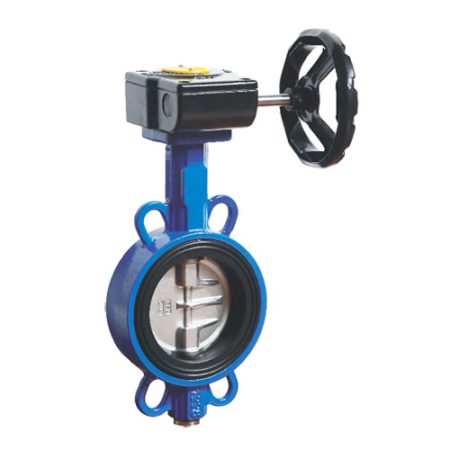
Brief overview of the impact of BFV valves on fluid flow processes
BFV valves have had a significant impact on fluid flow processes in various industries. Their advanced technology and streamlined design contribute to increased flow capacity, low pressure drop, and easy automation, resulting in improved operational efficiency and cost savings. The use of BFV valves has also increased safety by reducing the risk of spills and leaks while providing precise flow control, improving product quality. As a result, BFV valves have become a popular choice in industries such as oil and gas, food and beverage, and water treatment, where the efficient control of fluid flow processes is crucial for success.
Advantages of BFV valves in fluid flow processes
BFV valves offer several advantages in fluid flow processes, making them a popular choice in many industries. One notable advantage is their compact and streamlined design, which provides increased flow capacity and a low-pressure drop, leading to energy savings and reduced costs. BFV valves are also easy to operate and automate and can be customized to meet specific industrial requirements. They are highly resistant to wear and corrosion, ensuring long-lasting and reliable valve performance and reduced downtime and maintenance costs. Additionally, BFV valves provide precise flow control, maintaining product quality and safety during manufacturing processes. As a result, the use of BFV valves improves the efficiency, safety, and profitability of fluid flow processes in various industries.
Versatility in applications
One of the significant advantages of BFV valves is their versatility in various fluid flow applications. They are suitable for both low pressure and high-pressure systems and can handle liquids, gases, and slurries. In addition, BFV valves can work in a wide range of temperatures and are resistant to corrosion and wear, making them ideal for use in harsh and corrosive environments. They can be customized to meet specific industry standards and are available in different materials, sizes, and designs to suit various industrial requirements. As a result, BFV valves are used in numerous applications, including oil and gas, water treatment, chemical plants, food and beverage, and pharmaceutical industries, among others. Their versatility in various applications and their ability to provide precise flow control, ease of operation, and low maintenance costs make BFV valves an excellent investment for many industrial processes.
Precision flow control
Precision flow control is another significant advantage of BFV valves in fluid flow processes. With their streamlined design, BFV valves offer precise flow control, which plays a crucial role in maintaining product quality and process efficiency in various industries. The ability to fine-tune the flow rate allows for increased automation and reduced human intervention, resulting in a more efficient and cost-effective process. Additionally, BFV valves can be equipped with positioners and automation systems to provide even greater control over the flow rate. With precision flow control, manufacturers can reduce waste, improve yield, and ensure consistent product quality. Overall, the precise flow control capability of BFV valves makes them an invaluable asset in various fluid flow applications.
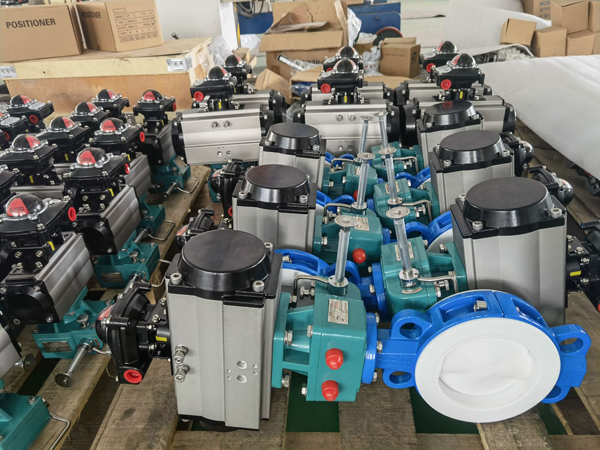
Ease of maintenance and repair
Ease of maintenance and repair is another significant advantage of BFV valves in fluid flow processes. They are made from durable and corrosion-resistant materials, ensuring long-lasting valve durability. Maintenance requirements are reduced due to the elimination of cases where valve components are in contact with the fluid flow medium. Access to the valve interior is possible without dismantling the piping system. This feature translates to minimal downtime and reduced maintenance costs. Additionally, the simple design of BFV valves makes them easy to disassemble and reassemble, allowing technicians to perform routine maintenance, cleaning, and repair quickly. With minimal maintenance downtime, BFV valves ensure efficient use of valuable production time. Therefore, ease of maintenance and repair is critical to the continued success of industrial processes where fluid flow control is crucial.
Case studies: Examples of how BFV valves have impacted the efficiency of fluid flow processes in various industries
Several case studies have highlighted the significant impact that BFV valves have had on various industrial processes. In the food and beverage industry, the use of BFV valves in a milk processing plant resulted in a 60% reduction in energy consumption due to reduced pressure drop. In the chemical industry, a valve manufacturer reported a 700% increase in production rates following the installation of BFV valves to improve flow control. The water treatment industry has also reported reduced energy usage and costs and increased system efficiency due to the use of BFV valves. Another example is in the pharmaceutical industry, where the use of BFV valves has improved the quality control of drug manufacturing processes by providing precise flow control. These examples demonstrate the effectiveness of BFV valves in improving the efficiency, safety, and profitability of fluid flow processes in various industries.
Chemical industries
Chemical industries play a critical role in our modern society by producing a vast array of chemicals that are used to make countless everyday items, from plastics and cosmetics to pharmaceuticals and fertilizers. The chemical industry is a large and diverse one, encompassing everything from research and development to manufacturing and sales. With its constant innovation and growth, the chemical industry has brought about many advancements in fields such as medicine, agriculture, and technology. However, with such a wide range of chemicals being produced and used, the industry must also prioritize safety measures to ensure the protection of both workers and the environment.
Petrochemical industries
Petrochemical industries are an integral part of the global economy, with their products ranging from plastics, rubber, paints, solvents, and synthetic fibers to detergents and adhesives. These industries are responsible for converting hydrocarbons extracted from crude oil and natural gas into a variety of useful chemicals. Petrochemicals have become the backbone of several key industries, including construction, automotive, electronics, and textiles. Due to the vast demand for petrochemicals, the industry has expanded significantly, and several countries now consider it a strategic focus. While the industry’s importance cannot be overstressed, it must also focus on ensuring the safety of workers and the environment by implementing regulations to control pollution and prevent accidents.
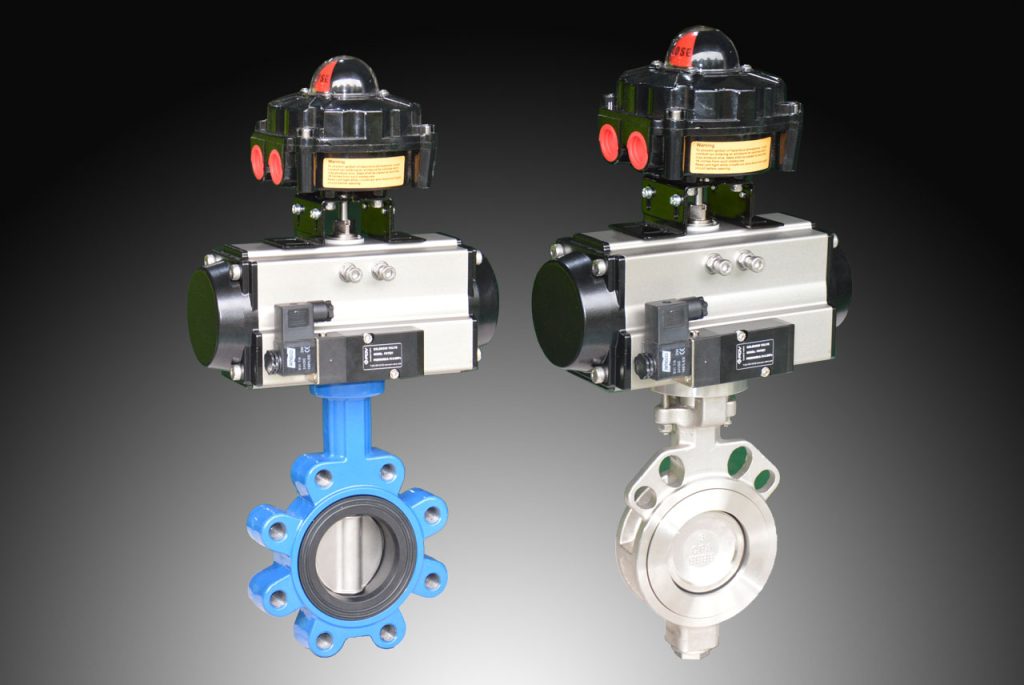
Water treatment and distribution systems
Water treatment and distribution systems are vital components of modern society. Clean and safe drinking water is essential for maintaining healthy communities. These systems are responsible for treating raw water and distributing it to residential and commercial customers. Treatment processes may include physical, chemical, and biological treatments to remove contaminants such as bacteria, viruses, chemicals, and minerals. Once the water is treated, it is transported through a network of pipes to consumers. To ensure safe drinking water, distribution systems must be properly maintained and monitored to prevent contamination and ensure that water quality meets or exceeds regulatory standards. These systems play a critical role in public health, and their proper operation is essential for the sustainability and well-being of communities.
Future advancements in BFV valves: Expectations and potential benefits
Future advancements in butterfly valve (BFV) technology have the potential to bring significant benefits to industries that depend on these valves for flow regulation. There are several areas where potential advancements are expected, including materials science and automation. New materials like high-temperature alloys and fluoropolymers could increase the lifespan and temperature range of BFV valves. Additionally, advancements in automation technology could lead to more precise and efficient valve control systems. These advancements could potentially lead to significant benefits, including increased production and reduced maintenance costs. Additionally, greater precision and control over the flow of fluids can have a positive impact on the environment. Ultimately, advances in BFV technology could lead to more sustainable and efficient use of resources in a wide range of industries, from pharmaceuticals to oil and gas.
Technological advancements
Technological advancements have revolutionized the way we live and work, transforming society in countless ways. The advent of computers, the internet, and mobile devices has made it possible for people to connect with one another from all corners of the world, breaking down geographical barriers and expanding access to information. Other technological advancements, such as renewable energy, nanotechnology, and artificial intelligence, are driving innovation in fields ranging from healthcare to transportation. These advancements are helping humanity tackle some of the biggest challenges facing our planet, including climate change, disease, and poverty. While technological advancements have unlocked unprecedented levels of progress and prosperity, it is essential that we remain mindful of the ethical implications of these innovations and work to ensure that they benefit society as a whole.
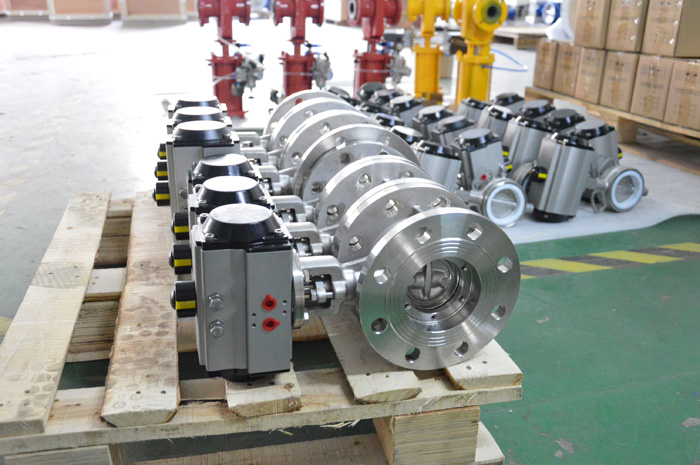
Improved efficiency and safety
Improved efficiency and safety are two main benefits that technological advancements have brought to many industries. Automation, machine learning, and robotics have allowed companies to streamline processes, reduce errors, and increase productivity. This has been particularly helpful in industries such as manufacturing and logistics, where repetitive and potentially dangerous tasks can be automated. By using sensors and connected devices, companies can also monitor equipment and processes in real-time, allowing them to identify problems before they become major issues. This has improved workplace safety and prevented accidents. In the healthcare industry, new technologies are allowing for better communication among medical professionals and improved treatments for patients. Ultimately, technological advancements are helping companies and industries become more efficient and safer, improving outcomes for both businesses and individuals.
Potential cost savings
Potential cost savings are another significant benefit of technological advancements. Automation and robotics can reduce the need for manual labor, resulting in lower labor costs for businesses. By using data analytics and predictive maintenance, companies can also identify equipment issues before they become major problems, reducing repair costs and downtime. Additionally, advancements in renewable energy technology, such as solar and wind power, are making it more cost-effective for companies to power their operations using clean energy. This not only reduces environmental impact but also reduces long-term energy costs. In the healthcare industry, digital health records and telemedicine can minimize administrative costs and reduce the need for expensive diagnostic tests. Overall, technological advancements have the potential to save companies money by improving efficiency, reducing operating costs, and increasing productivity.
Conclusion
In conclusion, technological advancements have brought about significant benefits to many aspects of society. From improved efficiency and safety to potential cost savings, technological advancements have transformed the way we live and work. These advancements have unlocked unprecedented levels of progress and prosperity, and show no signs of slowing down. However, it is essential that we continue to prioritize the ethical implications of these innovations and ensure that they benefit society as a whole. As we move forward, we must strive to strike a balance between progress and sustainability, using technology to address the biggest challenges facing our planet and create a better future for all.
Recap of the importance of BFV valves in fluid flow processes
In summary, Butterfly Valve (BFV) valves are essential components in fluid flow processes. They provide effective regulation of fluid flow while minimizing energy loss and maintaining system pressure. These valves are used in various industries, including pharmaceuticals, chemical processing, food, and beverage, and oil and gas. Proper selection and operation of BFV valves are critical to ensure optimal performance and prevent system failure. Advancements in BFV technology have the potential to bring significant benefits, including increased production and reduced maintenance costs. Ultimately, the importance of BFV valves can’t be overstated as they play a crucial role in ensuring efficient and sustainable use of resources in fluid flow processes.
Encouragement to consider BFV valves for industrial fluid flow processes
If you are involved in an industry that depends on fluid flow processes, it is essential to consider the use of Butterfly Valve (BFV) valves. These valves are highly effective in regulating fluid flow, reducing energy loss, and maintaining system pressure. With advancements in BFV technology, there is greater precision and control over fluid flow, resulting in increased production and reduced maintenance costs. Additionally, BFV valves are designed to be robust and durable, ensuring that they can withstand harsh conditions and extended use. Choosing the right BFV valve can have a significant impact on the efficiency and sustainability of your fluid flow processes, ultimately leading to improved productivity and a better bottom line.
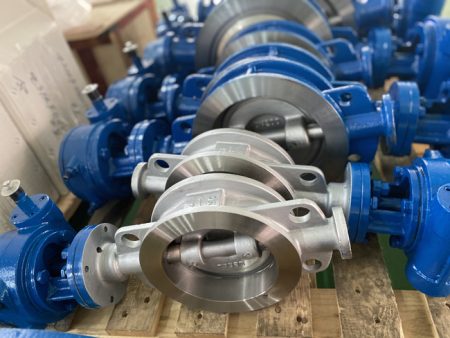
Final thoughts on the impact of BFV valves on fluid flow processes
In conclusion, Butterfly Valve (BFV) valves have a significant impact on fluid flow processes across a wide range of industries. Their ability to regulate fluid flow, maintain system pressure, and reduce energy loss has made them an essential component in fluid flow systems. Advancements in BFV technology have also led to more precise and efficient control, resulting in increased production, reduced maintenance costs, and greater sustainability. By choosing the right BFV valve for your industry and ensuring proper operation and maintenance, you can optimize the performance of your fluid flow systems and achieve better outcomes. Ultimately, the use of BFV valves is an investment in the efficiency, sustainability, and profitability of your business.




